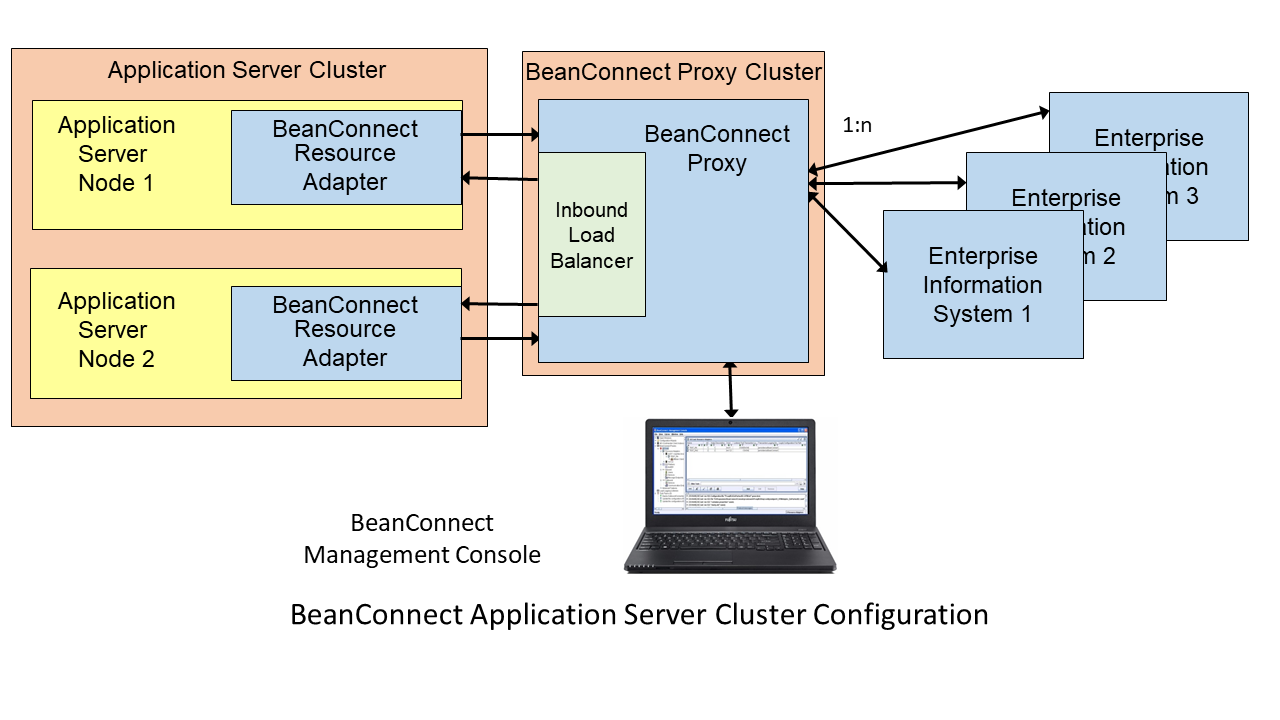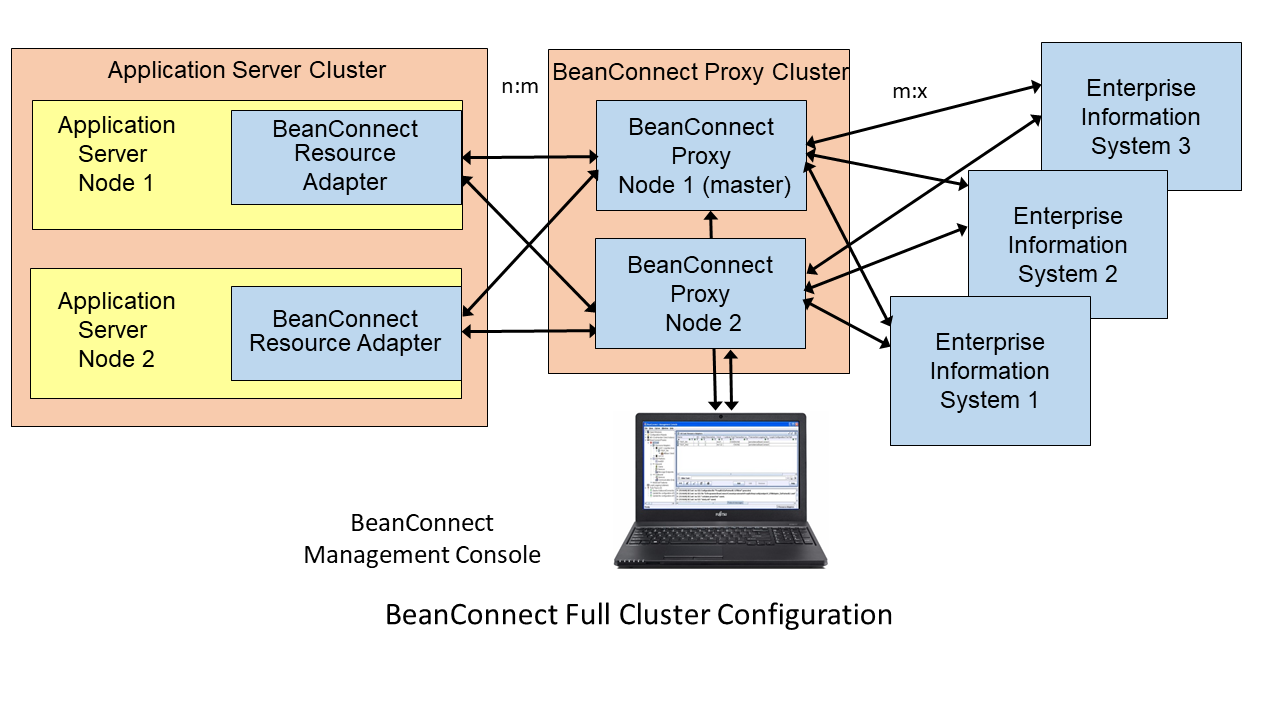BeanConnect supports both clusters in the application server and proxy clusters. This means that n instances of the resource adapter can be assigned to m proxy instances whereby the maximum is 32 resource adapter and 32 proxy instances.
Cluster operation is designed to increase reliability and balance the load between the instances.
- Cluster operation and multiple resource adapter mode are mutually exclusive.
- For cluster operation, the BeanConnect proxy must always be configured as a proxy cluster, even if only one proxy node is used.
Figure 6: BeanConnect components in Application Server Cluster operation with a proxy cluster with one proxy node
In the case of inbound communication, all the application server instances are always assigned to a single proxy instance. The proxy container is responsible for load balancing.
Figure 6a: BeanConnect with Application Server Cluster and Proxy Cluster
In the case of outbound communication, a resource adapter instance is always assigned to precisely one proxy cluster instance at any one time. If this instance fails, the resource adapter instance searches for a new proxy cluster instance. Load balancing is performed using the mechanisms present in the application server.
The proxy cluster is configured using the Management Console. One of the proxy instances is identified as the master instance and is used to synchronize the other proxy instances, for example when changes are made to the configuration data.


